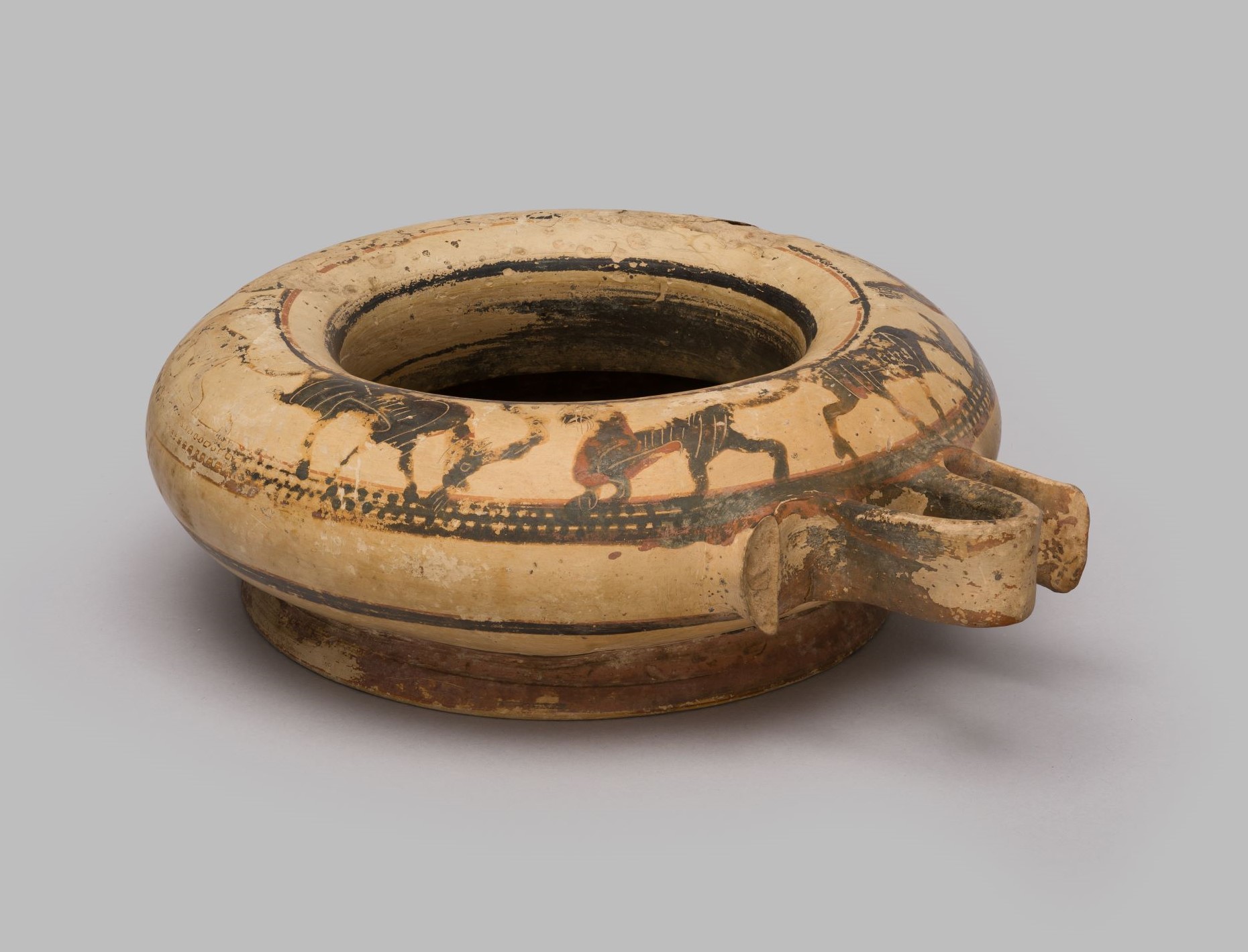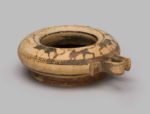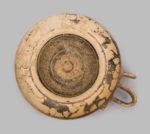
Ring Kothon [Gr47]
Middle Corinthian, by the Fiesole Painter, 570-550 BC
Painted terracotta (h. 6.8 cm, w. 21.8 cm)
Frieze of goats and panthers around the rim, concentric bands on the interior floor, the handle painted red.
Vases of this unusual shape were probably designed to hold perfumed oil, the incurved rim being designed to prevent the valuable liquid from spilling when the vessel was carried. Excavations at Corinth suggest that the shape was rare in burials, but often used in temple dedications.
The naturalistic depiction of wild animals is typical of Corinthian pottery from the 7th-6th centuries and derived ultimately from Near Eastern art.
Literature: J. Falconer and T. Mannack, Corpus Vasorum Antiquorum: Great Britain, Fascicule 19: Winchester College (Oxford, 2002), p. 15, plate 11.5-6; C.W. Neeft, Addenda et Corrigenda to D.A. Amyx, Corinthian Vase-Painting in the Archaic Period (Amsterdam, 1991), p. 76; Winchester College Memorial Buildings: Department of Classical Art (Winchester, 1909), p. 14 (no. 10)
Provenance: From Thebes, at Winchester College by 1909
Location: Treasury, Gallery 3

